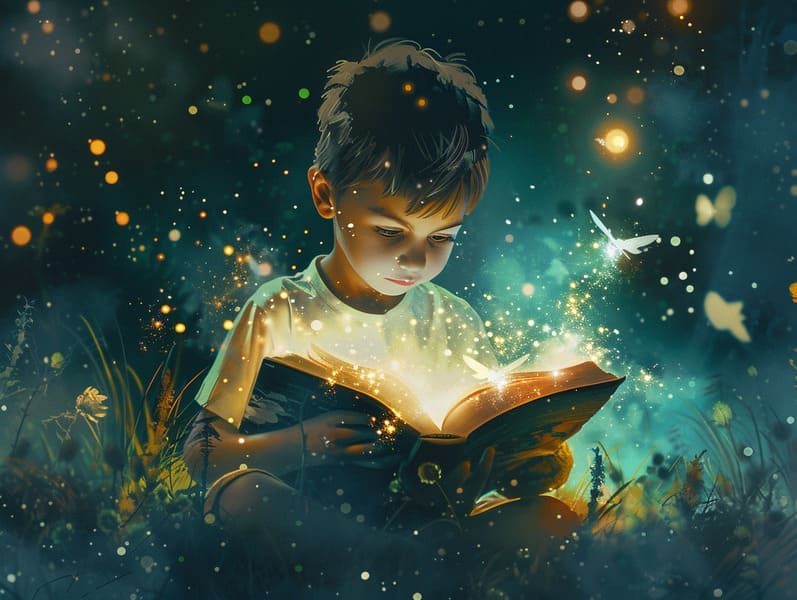
Fairy tales have enduring presence. These stories have been shared from one generation to the next millennia before they were ever documented. They arose from a variety of backgrounds, including Middle Eastern traditions. They were initially transmitted among older generations, often carrying themes and messages reflective of the societal norms and beliefs of the time.
The famous Grimm duo, the two Grimm brothers, were among the first to gather many of these beloved stories. Their published works, "Grimm's Fables," included tales like "Cinderella," "Hansel and Gretel," and "Snow-White and Rose-Red," which have since become staples in the world of classic fairy tales. Similarly, Andersen's imaginative stories, such as "The Little Mermaid," and "The Little Duckling," have stolen hearts worldwide, guaranteeing their place in the pantheon of iconic fairy tales.
Despite their age, traditional fairy tales remain as relevant as ever, especially as children's night stories. These charming stories are now available in different formats, including beautifully illustrated books, captivating animations, and free fairy tales online.
Their ongoing significance can be credited to several captivating elements:
Vital Lessons: Ancient fairy tales often whisper important moral lessons. Tales like "The Wolf and the Liar" teach the value of sincerity, while "The Tale of the Tortoise and the Hare" show the benefits of perseverance and meekness. These tales offer kids clear distinctions between right and wrong, molding their moral compass in a gentle yet profound way.
Empathy and Understanding: Classic fairy tales frequently include individuals facing obstacles and hardships, inspiring readers to resonate with their struggles and back their triumphs. For instance, "Beauty's Beast" points out the value of looking deeper to see the real character of a person, strengthening perception and understanding.
Cultural Recognition: Many fairy tales are infused with the cultural contexts from which they came. Delving into these tales can provide informative snapshots into different historical contexts, building a sense of global insight and acknowledgment.
Fantasy and Innovation: The supernatural elements in fairy tales—wizardry and magic—promote children’s visions. These tales lead readers to enchanted realms, engendering creative thinking and a sense of delight that stays a lifetime.
Ancient fairy tales are not only whimsical but also didactic. They provide mesmerizing tools in developing various mind and heart abilities in children. When timeless fairy tales are spoken, they foster language development by introducing new terms and meanings and sophisticated sentence structures. This practice also enhances hearing abilities and focus, as little ones keep up with the story, anxious to see what happens next.
Furthermore, exploring the themes and characters of traditional fairy tales can improve critical thinking and cognitive skills. Little ones are led to spot patterns, predict happenings, and comprehend cause and effect. These analyses also promote young ones communicate their thoughts and feelings, nurturing their emotional intelligence.
In today’s information age, the prevalence of free fairy tales online has made these tales more acquirable than ever. Digital sites and online apps make available large libraries of traditional fairy tales that can be seen or played anytime, anywhere. Fairy tales narrated are particularly prevalent, extending an fun way for young ones to delight in these mesmerizing stories. Read-aloud books and read-out-loud stories move characters and settings to life, often augmented by delightful musical scores and melodies that elevate the storytelling journey.
The persistent attraction of traditional fairy tales lies in their ability to modify to modern times while maintaining their underlying messages. Contemporary updates of these tales often present more inclusive figures and modern settings, making them meaningful to today’s audience. However, the core values of spirit, sympathy, and integrity remain unchanged, continuing to resonate with young readers of all ages.
Classic fairy tales also offer a sense of contentment and knownness. They furnish a neat narrative with a definite beginning, middle, and end, often winding up with the ending of conflicts and the triumph of good over evil. This constancy can be encouraging for young ones, fairy tales for kids making available a sense of consistency in an always shifting world.
Timeless fairy tales continue to enchant and teach new generations, maintaining their attraction and pertinence in modern society. As kids' bedtime tales, they give a perfect blend of allure and teaching, backing moral values, empathy, and creativity. The abundance of online fairy tales and the widespread nature of fairy tales read aloud warrant that these classic narratives remain reachable to new generations.
By sustaining and recounting these fairy tales, we continue to commemorate the rich tapestry of storytelling and cultural heritage. Whether you are seeing a colorful picture book, browsing a online collection, or listening to an voice book, the splendor of bedtime fairy tales is always within reach. These fairy tales remind us of the invariable influence of narratives and its ability to unify us across time and space.
Whether you are reading a colorful picture book, accessing a cyber library, or playing an voice book, the spell of famous fairy tales is always within reach.
These fairy tales emphasize of the ageless force of stories and its ability to gather us across centuries and lands, creating a bond that delights and instructs alike.